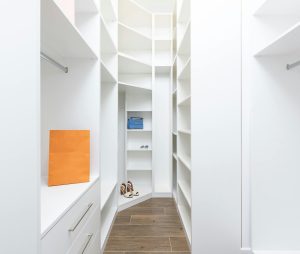3D Printed Homes: From Novelty to Mainstream
When the first 3D printed home was unveiled in China back in 2014, it was met with a mix of excitement and skepticism. Many believed that this was just a passing fad, a novelty that would quickly fade away. Fast forward a few years and 3D printed homes are no longer considered a novelty, but rather a viable solution to address the global housing crisis. From small-scale affordable housing projects to massive commercial developments, 3D printed homes are paving their way to becoming a mainstream construction method. In this article, we will explore the rise of 3D printed homes and how they are revolutionizing the construction industry.
The Beginning of a Revolution
The concept of 3D printed homes dates back to the 1980s when the first 3D printer was created. However, it wasn’t until the early 2000s that the technology started gaining traction in the construction industry. In 2004, a Dutch architect, Janjaap Ruijssenaars, created the first 3D printed home using a process called contour crafting. This monumental achievement opened the door for further research and development in the field of 3D printed construction.
Over the next decade, various companies and organizations started experimenting with different materials and techniques to create 3D printed homes. In 2012, an American company, ICON, created the first 3D printed home using a large-scale printer. Two years later, a Chinese company, Winsun, built 10 full-size 3D printed homes in a single day, cementing the technology’s potential for mass production.
The Advantages of 3D Printed Homes
One of the main benefits of 3D printed homes is the speed of construction. Traditional construction methods can take months or even years to complete a single home. With 3D printing, a home can be printed in a matter of days, significantly reducing construction time and costs. This makes 3D printed homes an ideal solution for affordable housing projects and disaster relief efforts.
Another advantage of 3D printed homes is their sustainability. Most 3D printers use recyclable materials such as concrete, which greatly reduces the environmental impact of construction. The precision of 3D printing also minimizes material waste, making it a more sustainable option compared to traditional construction methods.
The Roadblocks of 3D Printed Homes
Despite the many benefits of 3D printed homes, there are still some challenges that need to be overcome for it to become a mainstream construction method. The technology is still in its early stages, and there is a lack of regulations and standards for 3D printed homes. This means that they are not yet approved for residential use in most countries, making it difficult for companies to scale up their production.
Certain limitations also exist in terms of design and customization. Most 3D printed homes are box-shaped, limiting architectural creativity. However, with more research and development, it is expected that these limitations will be overcome, and 3D printed homes will be able to offer a variety of designs and styles.
The Future of 3D Printed Homes
The future of 3D printed homes looks promising. With the continuous advancements in technology, 3D printers are becoming more affordable and can be easily integrated into the construction process. It is predicted that in the near future, entire neighborhoods and even cities will be built using 3D printing technology.
Moreover, the potential for customization and personalization in 3D printed homes is immense. It is not far-fetched to imagine a future where homeowners can design and print their homes according to their specific needs and preferences.
In Conclusion
From a mere novelty to a potential game-changer in the construction industry, 3D printed homes have come a long way. While there are still hurdles that need to be overcome, the benefits and potential of this technology cannot be ignored. With more research and development, 3D printed homes have the potential to address the global housing crisis and revolutionize the way we build and live in homes.



